|
The aim of the present study was morphological and histochemical analysis of the lacrimal gland (LG) in African black ostrich Struthio camelus domesticus in the embryonic and postnatal period. Studies were conducted on 50 ostriches aged between the 28th day of incubation until 7 months old. Tissue sections were stained with haematoxylin and eosin, Azan trichrome, periodic acid-Schiff, Alcian blue pH 2.5, aldehyde fuchsin and Hale's dialysed iron. The LG in ostrich was classified as a tubulo-acinar type. The primordia of the lobes were determined in the LG structure on the 28th day of incubation, whilst the weakly visible lobes with acini and tubules were observed on the 40th day of incubation. Morphometric studies of the LG showed steady growth, characterised by an increase in both length and width. Histometric measurements of lobe size showed little difference between the first, second and third age groups, whilst in the fourth age group a marked increase in size of lobes was observed. The study showed that, apart from morphological changes, during the growth of the LG the character of acid mucopolysaccharides changed. Sulphated acid mucopolysaccharides were indicated, particularly with aldehyde fuchsin (AF) staining in the fourth age group. The Hale's dialysed iron (HDI) staining showed a low concentration of carboxylated acid mucopolysaccharides in the first and second age groups and a higher concentration in the third and fourth age groups. Periodic acid-Schiff staining (PAS)-positive cells were observed in each age group, but only a small number of cells with a weakly PAS-positive reaction were demonstrated in the first age group.
The lacrimal and Harderian glands are the main orbital glands belonging to the lacrimal apparatus (International Committee on Veterinary Gross Anatomical Nomenclature 2012; Jordan 1990; Paynter 1993). Both glands have been described in amphibians, reptiles, birds and mammals (Sakai 1988; Shirama & Hokano 1992). The anatomical structure of these glands is characterised by great variability (Chieffi Baccari, Di Matteo & Minucci 1992; Dimitrov 2011a, 2011b; Rehorek et al. 2005; Schechter, Warren & Mircheff 2010). In birds the lacrimal gland (LG) is less developed and of smaller size than the Harderian gland (Dimitrov 2011a; Dimitrov & Genchev 2011). The LG is located within the peri-orbita in the dorsotemporal part of the orbit and secretes via multiple excretory ducts into the conjunctival space beneath the lower eyelid (Harris et al. 2008; Jones, Pierce & Ward 2007; Kern 2007). The Harderian gland is located medioventrally to the eyeball, near the inter-orbital septum (Boydak & Aydin 2009; Burns 1992; Dimitrov & Genchev 2011; Kozlu & Altunay 2011; Mobini 2012).
In birds the lacrimal apparatus has been implicated as a part of the head-associated lymphatic tissue system (Rehorek et al. 2005, citing Burns 1992) in which the Harderian gland is the lympho-epithelial organ (Dimitrov 2011a; Ohshima & Hiramatsu 2002) and a site of immune response (Baba et al. 1990; Boydak & Aydin 2009; Kozlu & Altunay 2011; Payne 1994). The LG is responsible for production of tear fluid which, together with the Harderian gland and conjunctiva-associated lymphoid tissue, helps to maintain corneal health (Lavach 1990; Mohammadpour 2009).
The LG produces serous, mucous or seromucous fluid (Lavach 1990). The LG excretory products are part of the tear film that moistens and lubricates the anterior eye surface and also provides nutrients (Dartt 2009; Funaki, Hodges & Dartt 2010; Klećkowska-Nawrot & Dzięgiel 2008; Klećkowska-Nawrot et al. 2013; Payne 1994; Zagon et al. 2012). The tear film protects the anterior surface of the cornea and both superior and inferior conjunctival sacs (Jordan 1990; Payne 1994), and allows gas exchange between the air and the epithelium (Lavach 1990; Mohammadpour 2009). The tear film consists of three layers: a surface lipid layer, a middle aqueous layer, and an inner mucous layer (Walcott 1998) covering the exposed surface of the eye, namely the cornea and conjunctiva (Hodges & Dartt 2003). The LG produces the constituents of the aqueous layer (Hodges & Dartt 2003). The tears contain several soluble antimicrobial factors that protect the ocular surface (Davidson & Kuonen 2004). The LG-specific proteins found at highest concentrations in tears are lactoferrin, tear-specific pre-albumin and lysozyme (Kijlstra & Kuizenga 1994). A clear cornea with a smooth, well-lubricated facade is a prerequisite for clear vision. This is particularly important for animals that inhabit dry, hot and sandy areas (Mohammadpour 2009).
Struthio camelus domesticus, also known as African black ostrich, is usually referred to by breeders as ‘black necks’. The African black ostrich is the result of many years’ selection. This breed was created by crossing two subspecies: the North African ostrich, Struthio camelus camelus, and the southern African ostrich, Struthio camelus australis (Busse 1990; Horbańczuk 2003). African black ostrich is characterised by a milder temperament, better quality of feathers, as well as better growth than the others (Horbańczuk 1997).
Ocular diseases can have a significant impact on the condition and productivity of breeding animals. The majority of dry eye symptoms are the result of chronic inflammation of the LG, which decreases the ability of the eye to respond to environmental factors (Sorgolu, Yucel & Aktas 2003; Stern et al. 2004). The LG secretory function and tear film composition play an important role in eye physiology and pathology (Flanagan & Willcox 2009; Kawashima et al. 2012).
The aim of the present study was morphological and histochemical analysis of the LG during the embryonic and postnatal period in ostriches. Detailed knowledge of macroscopic and microscopic LG morphology can be a basis for diagnosis and treatment of ocular diseases in ostriches.
|
Research methods and design
|
|
Animals
The studies were performed on 50 African black ostriches aged between the 28th day of incubation and 7 months. The study included 12 pre-hatching birds (28, 33 and 40 days of incubation) and 38 post-hatching birds (24, 48, 72 hours after hatching; 2, 3, 5 weeks of age; 5, 6, 7 months of age). The animals were divided into four age groups on the basis of histological differences. The embryos were obtained from incubated eggs provided by an ostrich farm in Namyslow, Poland. Extracted embryos were classified into different developmental stages based on the days of incubation. The post-hatching birds from the ostrich farm in Namyslow were collected in 2010–2011. All the birds died as a result of natural causes. Mummified or underdeveloped embryos and nestlings were excluded from this study. The LG was dissected from embryos and birds immediately after death and fixed in 4% buffered formaldehyde for 48 hours.
Macroscopic evaluation
Macroscopic evaluation of the LG was performed using a stereoscopic Zeiss Stemi 2000-C microscope (Carl Zeiss, Jena, Germany). Solutions of 0.5% – 4% acetic acid (CH3COOH), and 70% ethyl alcohol (C2H5OH) were used for the clear presentation of LG anatomical structure. LG morphology was described using topographic anatomical methods, namely holotypy and syntypy. Morphometric measurements (length and width) of glands were obtained using an electronic slide caliper with an accuracy of 0.1 mm. Data were statistically processed by statistical software (Microsoft Office Professional Plus 2010, Microsoft Corporation, Redmond, WA, USA).
Histological analysis
The dissected LGs were immediately fixed in 4% buffered formaldehyde for 48 hours, rinsed in running water for 24 hours and then processed in a vacuum tissue processor (ETP) (RVG3, Intelsint, Italy), embedded in paraffin and cut on sliding microtome Slide 2003 (PfmA.g., Germany) into 3 µm – 4 µm sections. All samples were stained with H&E and Azan trichrometo demonstrate the general structure. The histological slides were examined with a Zeiss Axio Scope A1 light microscope (Carl Zeiss, Jena, Germany) for the histological description (Zawistowski 1965).
Histochemical analysis
Histochemical analysis was conducted as follows: periodic acid-Schiff staining (PAS) to identify the presence of muco-substances (neutral or acidic) and glycoproteins; Alcian blue (AB) pH 2.5 to show sialylated glycoproteins; Hale's dialysed iron (HDI) and aldehyde fuchsin (AF) to demonstrate sulphated acid mucopolysaccharides (SAM) and carboxylated acid mucopolysaccharides (CAM) and elastic tissue was demonstrated by AF staining. Slides were examined with a Zeiss Axio Scope A1 light microscope (Carl Zeiss, Jena, Germany) with an Axio Vision system (Axio Scope A1, Carl Zeiss, Jena, Germany). PAS, AB pH 2.5, AF and HDI staining scoring systems were based on standard protocols that have been described previously (Spicer & Henson 1967). Anatomical terminology used was according to Paynter (1993).
Gross anatomy
The LG of the ostriches became macroscopically visible by the 28th day of incubation, and appeared as a uniform, undivided and flattened gland. In all age groups this gland was bright red and oval, and positioned in the dorsolateral angle of the orbit, between the lateral and dorsal rectus muscles, close to the pyramidal third eyelid muscle and tendon of the pyramidal muscle. The LG secretes via multiple ducts that open into the conjunctival space beneath the lower eyelid. The nasolacrimal duct penetrated the lacrimal bone and rostrum maxillae premaxillae bone and opened into the nasal cavity.
Group 1
The mean size of the LG in the first age group of pre-hatching birds (length × width with secondary duct [SD]) was 4.92 mm (± 0.9) × 2.65 mm (± 0.5) (Figure 1).
 |
FIGURE 1: Morphometric parameters of the lacrimal gland in African black ostrich in the embryonic and postnatal period. |
|
The LG was covered by a thin connective tissue capsule with septa extending into the gland and dividing it into primordia or lobes (Figure 3a). The loose connective tissue was composed of adipocytes, a large amount of blood vessels, fibroblasts, rare lymphocytes, and collagenous and reticular fibres (Figure 3f). The numerous fine elastic fibres in the capsule and gland septa were demonstrated with AF staining (Figure 4d). The average thickness of connective tissue interlobular septa was 34.26 µm (± 6.5) (Figure 2). Amongst primordia of the lobes, lobules with cubic cells within the epithelial layer and a wide lumen were found on the 28th and 33rd days of incubation (Figures 3b and 3d). There was no division into acini and tubules (Figures 3c and 3f). The average size of lobes was 205.07 µm (± 49.6) (Figure 2). On the 40th day of incubation a clear division into lobes with interlobular connective tissue was observed, and the acini and ducts were present (Figure 3e). In the central part of the LG the lobes had 3–4 acini and tubules, whilst closer to the periphery of the gland the number of acini and tubules was higher (7–12). The mean outer diameter of the glandular acini on the 40th day of incubation was 40.7 µm (± 7.0) and the mean outer diameter of the secondary ducts was 130.61 µm (± 24.5) (Figure 2). The LG primary ducts were absent in the first group of birds.
 |
FIGURE 2: Histometric parameters of the lacrimal gland in African black ostrich in the embryonic and postnatal period. |
|
 |
FIGURE 3: Light micrograph of the lacrimal gland in African black ostrich in group 1. (a) 28th day of incubation, (b) 28th day of incubation, (c) 40th day of incubation, (d) 33rd day of incubation, (e) 40th day of incubation and (f) 28th day of incubation. |
|
Examination of the LG with PAS staining showed numerous cells with a weakly positive reaction (−/+) that contained PAS-positive granules. PAS staining detected the presence of neutral and acid mucopolysaccharides and glycoproteins (Figure 4a and Table 1). AB pH 2.5 staining showed the presence of slightly positive granules (−/+) (light blue colour) in cells or single cells with blue granules that were considered positive (+) cells with AB pH 2.5 (Figure 4b and Table 1). This reaction indicated the presence of sialylated glycoproteins. HDI staining demonstrated a slightly positive reaction (−/+) in only a few cells, which were weakly blue in colour (Figure 4c and Table 1). HDI staining detects the presence of CAM. AF staining gave a positive reaction (+/++), with a purple colour that indicated the presence of SAM (Figure 4d and Table 1).
 |
FIGURE 4: Light micrograph of the lacrimal gland in African black ostrich in group 1. (a) 33rd day of incubation, (b) 33rd day of incubation, (c) 40th day of incubation and (d) 28th day of incubation. |
|
| TABLE 1: Histochemical analysis of the lacrimal gland in African black ostrich in the embryonic and postnatal period. |
Group 2
The mean size of the LG in the second age group (length × width × with SD) was 7.22 mm (± 1.3) × 3.02 mm (± 0.4) (Figure 1).
In this group of birds the slightly marked lobes observed were comparable to those in the first age group. The average thickness of connective tissue interlobular septa was 27.57 µm (± 3.2) (Figure 2). The average size of lobes in this group was 216.91 µm (± 38.9) (Figure 2). Each lobe contained from 2 to 7 acini and ducts (Figure 5a). The primary and secondary ducts were well defined and branched (Figures 5b and 5f). The acini were composed of tall conical cells with a small lumen and were surrounded by myoepithelial cells (Figure 5c). The mean outer diameter of the glandular acini was 42.52 µm (± 3.4) (Figure 2). The ducts had one layer of cubic epithelium and a large and irregular lumen (Figures 5b and 5c). The mean outer diameter of the primary ducts in this group was 142.31 µm (± 13.7) and of the secondary ducts was 119.27 µm (± 8.6) (Figure 2).
 |
FIGURE 5: Light micrograph of the lacrimal gland in African black ostrich in group 2. (a) 24th hour after hatching, (b) 24th hour after hatching, (c) 72th hour after hatching, (d) 72th hour after hatching, (e) 24th hour after hatching, and (f) 48th hour after hatching. |
|
In this group of animals PAS staining of LG demonstrated the presence of secretory cells containing PAS-positive (+/++) granules irregularly located in glandular acini and ducts (Figure 5d and Table 1). Staining with AB pH 2.5 indicated the presence of positive granules (+/++) in glandular acini and duct epithelial cells (Figure 5e and Table 1). HDI staining showed a weakly positive reaction ( /+) in the peripheral part of lobes and a positive reaction (++) in the central part of lobes amongst the ducts, indicating the presence of CAM (Figure 5f and Table 1). In addition, the AF staining showed weakly positive granules (−/+) in acini and ducts, indicating the presence of SAM (Table 1).
Groups 3 and 4
The mean size of LG in group 3 (length × width with SD) was 9.73 mm (± 1.9) × 4.54 mm (± 1.3) (Figure 1) and in group 4 was 14.52 mm (± 2.4) × 5.68 mm (± 1.2) (Figure 1).
Significant changes in the acini and secondary and primary tubules were observed in the group 3 and 4 birds. In these age groups less interlobular connective tissue and a clear division into lobes were observed in comparison to the first and second age groups (Figures 6a, 6c and 8a). The average thickness of interlobular septa in the third age group was 17.41 µm (± 4.9) and in the fourth age group 25.23 µm (± 6.7) (Figure 2). The average size of lobes in the third age group was 215.7 µm (± 25.8) and in the fourth age group 402.49 µm (± 30.8) (Figure 2). The acini were composed of tall conical cells that formed a small lumen and were surrounded by myoepithelial cells. The myoepithelial cells lay around the basal membrane of the acini (Figures 6b, 6d and 8c). The nuclei of the acini cells were ovoid and located in the basal compartment of the cytoplasm. These cells had granular, basophilic, vacuolated cytoplasm (Figure 6b, 8c and 8d). The mean outer diameter of the glandular acini in the third age group was 52.67 µm (± 11.4) and in the fourth age group 73.63 µm (± 12.7) (Figure 2). The secondary tubules were lined with cuboidal cells and had a large and irregular lumen. The nuclei of these cells had an oval shape and were located in the basal part of cells (Figures 6b, 6d and 8c). The mean outer diameter of the secondary ducts in the third age group was 109.28 µm (± 7.1) and in the fourth age group was 130.08 µm (± 13.1) (Figure 2). In the central part of each lobe from 2 to 4 primary ducts were present. The mean outer diameter of the primary ducts in the third age group was 165.75 µm (± 19.2) and in fourth age group 208.51 µm (± 20.6) (Figure 2).
 |
FIGURE 6: Light micrograph of the lacrimal gland in African black ostrich in group 3. (a) 2-weeks-old, (b) 2-weeks-old, (c) 3-weeks-old and (d) 3-weeks-old. |
|
The differences in histochemical findings between the third and fourth age groups of birds are indicated in Table 1.
Group 3: PAS staining demonstrated the presence of secretory cells containing PAS-positive granules evaluated as (+) and not many cells with a stronger reaction, evaluated as (+/++), irregularly located in glandular acini and primary and secondary ducts (Figure 7a and Table 1). Staining with AB pH 2.5 in the LG of 2-week-old ostriches demonstrated the presence of weakly positive granules (−/+) in the glandular units and ducts (Table 1), whilst in the LG of 3-and 5-week-old birds this staining showed the presence of positive granules (++) in all acini and ducts (Figure 7b). HDI staining showed the presence of positive granules evaluated as (++) both in acini and in secondary ducts, and indicated the presence of CAM (Figure 7c and Table 1). AF staining showed weakly positive granules (−/+) in acini and secondary ducts that also indicated the presence of CAM (Figure 7d and Table 1).
 |
FIGURE 7: Light micrograph of the lacrimal gland in African black ostrich in group 3. (a) 3-weeks-old, (b) 3-weeks-old, (c) 5-weeks-old and (d) 2-weeks-old. |
|
 |
FIGURE 8: Light micrograph of the lacrimal gland in African black ostrich in group 4. (a) 6-months-old, (b) 6-months-old, (c) 5-months-old and (d) 7-months-old. |
|
Group 4: In 6-month-old birds a weakly PAS-positive (−/+) reaction was observed in a small number of glandular cells (Figure 9b and Table 1), whereas in 7-month-old birds a PAS-positive reaction, evaluated as (+++), was evident in all acini and ducts (Figure 9a). Staining with AB pH 2.5 indicated the presence of strongly positive granules (+++) located in glandular acini and primary and secondary ducts (Figures 9c and 9d, Table 1). HDI staining indicated a medium-positive reaction (++), similar to that in the third age group of ostriches, indicating the presence of CAM (Figures 10a and 10b, Table 1). In addition, the AF staining showed the presence of positive granules evaluated at (++/+++) in acini and ducts, indicating the presence of SAM (Figures 10c and 10d, Table 1).
 |
FIGURE 9: Light micrograph of the lacrimal gland in African black ostrich in group 4. (a) 7-months-old, (b) 6-months-old, (c) 6-months-old and (d) 5-months-old. |
|
 |
FIGURE 10: Light micrograph of the lacrimal gland in African black ostrich in group 4. (a) 7-months-old, (b) 5-months-old, (c) 6-months-old and (d) 5-months-old. |
|
This study was approved by the II Local Ethical Committee in Wroclaw, Poland (No. 19/2010).
The LG is poorly described in birds compared to mammals (Burns 1976; Henker et al. 2013; Mohammadpour 2009). The LG gland in each age group of ostriches examined was located in the region of the posterior commissure of the eyelid, in the dorsolateral angle of the orbit between the lateral and dorsal rectus muscles, close to the pyramidal third eyelid muscle and tendon of the pyramidal muscle. Similar localisation of this gland has been demonstrated in other avian species, e.g. turkey, chickens and ducks (Burns 1979; Dimitrov 2011b). The LG in pigs is also located in the dorsolateral angle of the orbit, but between the dorsal oblique muscle and the lateral rectus muscle, and appears as a soft and pale structure (Henker et al. 2013), whereas the LG was bright red in the ostriches examined.
In the present study the ostrich LG appeared at around the 28th day of incubation as a uniform, undivided, oblate gland. Development of the LG is an example of an epithelial-mesenchymal interaction (Johnston et al. 1979). The tubular invagination, extension and branches give rise to the lobular structure of the mature gland (Kammandel et al. 1999). According to Chieffi Baccari, Di Matteo and Minucci (1995) the LG in the lizard Podarcis s. sicula appears on about the 22nd day of development. During development the acini fill up the preformed mesenchymal sac (Chieffi Baccari et al. 1995). The LG in pigs becomes macroscopically visible at the 42nd day of gestation (Klećkowska-Nawrot & Dzięgiel 2008).
Studies of the histological structure of the LG have been reported in various birds, but not in ostriches (Burns 1976; Dimitrov & Genchev 2011). In ostriches the LG was characterised by an increase in both length and width. The largest gland was observed in the fourth age group of ostriches, in which the largest increase in length was demonstrated compared to the other age groups. The entire surface of the LG was covered by a connective tissue capsule. The interstitium consisted of some collagen fibres separating the glandular lobe, as previously reported by others (Harris et al. 2008; Schechter et al. 2010).
In ostriches the LG consists of tubules lined with secretory epithelium and organised into lobes that drain into ducts; these anastomose into larger ducts that finally drain onto the ocular surface. The LG of the ostrich has been classified as a compound tubular-acinar gland, as in Japanese quails (Dimitrov & Genchev 2011). According to other authors the cells of the secretory epithelium in tubules and the acini are columnar with basally located nuclei. The duct cells are similarly organised, although more cuboidal in shape (Walcott 1998). Studies of the LG in turkey and chicken broilers demonstrated differences in the number of lobules between these birds (Dimitrov 2011b). In the present study the size of the glandular lobes was evaluated. Histometric measurements of glandular lobe size showed little difference amongst the first, second and third age groups; however, in group 4 a marked increase in lobe size was observed. Different results were obtained in measurement of interlobular septa thickness, which decreased from the first to the third age group, with an increase of thickness in the fourth age group. This may be related to the significant increase in lobe size in birds of the fourth age group. On the other hand, the outer diameter of acini showed an increase from the first to the fourth age group of ostriches. This increase in size was small in the first and second age groups and larger in the third and fourth age groups.
Varied results were obtained in measurement of the outer diameter of the primary and secondary glandular ducts. There were no primary glandular ducts in the first age group, whilst from the second to the fourth age groups a steady increase was demonstrated in the outer diameter of the primary ducts. Secondary glandular ducts were observed in each age group, but only from the 40th day of incubation in the first age group. The outer diameter of these ducts was high in the first age group. The outer diameter of the secondary ducts underwent a slight decrease in groups 2 and 3, increasing again in the fourth age group and reaching a size similar to the first age group. The number of secretory ducts in turkey and chicken broilers decreased from the periphery towards the central part of glandular lobules (Dimitrov 2011b).
There were no plasma cells in any of the groups of birds studied, and only a few lymphocytes were observed, confirming other reports that the Harderian gland is responsible for the production of immunoglobulin in birds (Khan et al. 2007; Kozlu & Altunay 2011; Nasrin et al. 2013). Different observations were made by Burns (1979). Surgical removal of the Harderian gland in the domestic fowl resulted in increased secretory activity of the LG and also in an increase in goblet cell numbers along the length of the LG duct. Plasma cells were more numerous in the LG in birds that were operated on (Burns 1979).
Histochemical analysis of ostriches’ LG showed differences in the proportion of secreted SAM to CAM in acini and duct epithelial cells. In each age group this proportion was evaluated on the basis of HDI and AF staining. SAM were indicated particularly by AF staining of the LG in the fourth age group of ostriches; however, SAM were not observed with either HDI or AF staining in the third age group. Furthermore, HDI staining did not demonstrate SAM in any age group of ostriches. Instead HDI staining showed low concentrations of CAM in the first and second age groups, and a higher concentration in the third and fourth age groups.
Very different results were obtained with PAS staining. In the LG of examined birds, PAS-positive cells were observed in each age group; however, only a small number of cells with a weakly PAS-positive reaction was demonstrated in the first age group. In the second age group a medium PAS-positive reaction was observed, but in the third age group the PAS-positive reaction was weaker. Similar results were obtained by Millar et al. (1996), who demonstrated a small number of PAS-positive acini cells in the superior and inferior LG of the rabbit. Results of research on morphological changes in rat LG indicate that ageing is associated with alteration in the ability of acinar cells to synthesise and secrete proteins (Draper et al. 2003). According to Sakai (1989) the lobules of the LG comprise a branched duct system and terminal acini with two types of secretory cells: acidic cells positive both for PAS and AB pH 2.5 and neutral cells positive for PAS and negative for AB pH 2.5. The AB pH 2.5 staining of the LG in examined ostriches indicated the strongest positive reaction in the fourth age group, both in acinar epithelium and in primary and secondary duct epithelium. In the same group a strong PAS-positive reaction was demonstrated in the 7-month-old birds. In the other age groups PAS and AB pH 2.5 staining showed a slight difference. Chieffi Baccari et al. (1992) also proved that the LG is composed of two cell types characterised by histochemical staining with AB pH 2.5 and PAS. Rare PAS-positive cells were found scattered in the acinar epithelium, as in the first age group of ostriches examined in this study.
In the ostriches that were examined in this study, steady growth of the LG was observed with an increase in both length and width. Together with the growth of the gland, a marked increase in size of the lobes and glandular acini was observed, with apparent increase in dimensions of the gland structures. Within the lobes a linear increase in lobular size was observed. The development of primary ducts was present from the second to the fourth age groups. The study showed that apart from morphological changes, during the growth of LG the character of acid mucopolysaccharides varied. Histological study showed no plasma cells in any group of birds, and confirmed other reports that not the LG but the Harderian gland is responsible for the production of immunoglobulin in birds.
This research was supported by statutory research and development activity funds assigned to the Faculty of Veterinary Medicine, Wroclaw University of Environmental and Life Sciences.
Competing interests
The authors declare that they have no financial or personal relationships which may have inappropriately influenced them in writing this article.
Authors’ contributions
J.K-N. (University of Environmental and Life Science) obtained the research material, performed the study in the departmental laboratory and edited manuscript. K.G-H. (University of Environmental and Life Science) supervised the research and edited the manuscript. R.N. (University of Environmental and Life Science) supervised the research and edited manuscript. K.K. (Medical University of Warsaw) edited the manuscript.
Baba, T., Kawata, T., Matsumoto, K. & Kajiwara, T., 1990, ‘Role of the Harderian gland in immunoglobulin A production in chicken lacrimal fluid’, Research in Veterinary Science 49, 20–24.
Boydak, M. & Aydin, M.F., 2009, ‘Histology of the Harderian gland of domestic geese Anser anser domesticus’, Acta Veterinaria Brno 78, 199–204. http://dx.doi.org/10.2754/avb200978020199
Burns, R.B., 1976, ‘The structure of the lachrymal glands of the domestic fowl and of the duck’, Research in Veterinary Science 21, 292–299.
Burns, R.B., 1979, ‘Histological and immunological studies on the fowl lacrimal gland following surgical excision of Harder's gland’, Research in Veterinary Science 27, 69–75.
Burns, R.B., 1992, The Harderian glands in birds: Histology and immunology, Springer-Verlag, Berlin, Heidelberg.
Busse, P., 1990, Mały słownik zoologiczny–ptaki, Wiedza Powszechna, Warsaw.
Chieffi Baccari, G., Di Matteo, L. & Minucci, S., 1992, ‘The orbital glands of the chelonians Pseudemysscripta and Testudograeca: Comparative histological, histochemical and ultrastructural investigations’, Journal of Anatomy 180, 1–13.
Chieffi Baccari, G., Di Matteo, L. & Minucci, S., 1995, ‘Organogenesis of the orbital glands in the lizard Podarcis s. sicula: A histological, histochemical and ultrastructural study’, Anatomia Histologia Embryologia 192, 43–52.
Dartt, D.A., 2009, ‘Neural regulation of lacrimal gland secretory processes: Relevance in dry eye diseases’, Progress in Retinal and Eye Research 28, 155–177. http://dx.doi.org/10.1016/j.preteyeres.2009.04.003
Davidson, H.J. & Kuonen, V.J., 2004, ‘The tear film and ocular mucins’, Veterinary Ophthalmology 7, 71–77. http://dx.doi.org/10.1111/j.1463-5224.2004.00325.x
Dimitrov, D., 2011a, ‘Histometrical investigation on the turkey broiler's third eyelid (Harderian) gland’, Journal of Agricultural Science and Technology 3, 246–248.
Dimitrov, D., 2011b, ‘Intraorbital glands in turkey broilers. III. Lacrimal gland histometry’, Journal of Agricultural Science and Technology 3, 327–329.
Dimitrov, D.S. & Genchev, A.G., 2011, ‘Comparative morphometric investigations of intraorbital glands in Japanese quails Coturnix coturnix japonica’, Bulgarian Journal of Veterinary Medicine 14, 124–127.
Draper, C.E., Singh, J. & Adeghate, E., 2003, ‘Effects of age on morphology, protein synthesis and secretory responses in the rat lacrimal gland’, Molecular and Cellular Biochemistry 248, 7–16. http://dx.doi.org/10.1023/A:1024159529257
Flanagan, J.L. & Willcox, M.D., 2009, ‘Role of lactoferrin in the tear film’, Biochimie 91, 35–43. http://dx.doi.org/10.1016/j.biochi.2008.07.007
Funaki, C., Hodges, R.R. & Dartt, D.A., 2010, ‘Identification of the Raf-1 signaling pathway used by cAMP to Inhibit p42/p44 MAPK in rat lacrimal gland acini: Role in potentiation of protein secretion’, Investigative Ophthalmology & Visual Science 51, 6321–6328. http://dx.doi.org/10.1167/iovs.10-5690
Harris, M.C., Schorling, J.J., Herring, I.P., Elvinger, F., Bright, P.R. & Pickett, J.P., 2008, ‘Ophthalmic examination findings in a colony of screech owls Megascopsasio’, Veterinary Ophthalmology 11, 186–192. http://dx.doi.org/10.1111/j.1463-5224.2008.00618.x
Henker, R., Scholz, M., Gaffling, S., Asano, N., Hampel, U., Garreis, F. et al., 2013, ‘Morphological features of the porcine lacrimal gland and its compatibility for human lacrimal gland xenografting’, PLoS One 12, e74046. http://dx.doi.org/10.1371/journal.pone.0074046
Hodges, R.R. & Dartt, D.A., 2003, ‘Regulatory pathways in lacrimal gland epithelium’, International Review of Cytology 231, 129–196. http://dx.doi.org/10.1016/S0074-7696(03)31004-6
Horbańczuk, J., 1997, ‘Current situation in ostrich farming in Poland’, Australian Ostrich Association Journal 40, 22–23.
Horbańczuk, J., 2003, Struś Afrykański, Auto-Graf, Warsaw.
International Committee on Veterinary Gross Anatomical Nomenclature, 2012, Nomina Anatomica Veterinaria (NAV), 5th edn. (revised version), The Editorial Committee, Hanover, Germany/Columbia, MO, USA/Ghent, Belgium/Sapporo, Japan).
Johnston, M.C., Noden, D.M., Hazelton, R.D., Coulombre, J.L. & Coulombre, A.J., 1979, ‘Origins of avian ocular and periocular tissues’, Experimental Eye Research 29, 27–43. http://dx.doi.org/10.1016/0014-4835(79)90164-7
Jones, M.P., Pierce, K.E. & Ward, D.W., 2007, ‘Avian vision: A review of form and function with special consideration to birds of prey’, Journal of Exotic Pet Medicine 16, 69–87. http://dx.doi.org/10.1053/j.jepm.2007.03.012
Jordan, D., 1990, ‘Accessory lacrimal glands’, Ophthalmic Surgery 2, 146–147.
Kammandel, B., Chowdhury, K., Stoykova, A., Aparicio, S., Brenner, S. & Gruss, P., 1999, ‘Distinct cis-essential modules direct the time-space pattern of the Pax6 gene activity’, Developmental Biology 205, 79–97. http://dx.doi.org/10.1006/dbio.1998.9128
Kawashima, M., Kawakita, T., Inaba, T., Okada, N., Ito, M., Shimmura, S. et al., 2012, ‘Dietary lactoferrin alleviates age-related lacrimal gland dysfunction in mice’, PLoS One 7, e33148. http://dx.doi.org/10.1371/journal.pone.0033148
Kern, T.J., 2007, ‘Exotic animal ophthalmology’, in K.N. Gelatt (ed.), Veterinary Ophthalmology, 4th edn., pp. 1370–1405, Blackwell Publishing, Oxford.
Khan, M.Z.I., Jahan, M.R., Islam, M.N., Haque, Z., Islam, M.R. & Kon, Y., 2007, ‘Immunoglobulin (Ig)-containing plasma cells in the Harderian gland in broiler and native chickens of Bangladesh’, Tissue and Cell 39, 141–149. http://dx.doi.org/10.1016/j.tice.2007.02.005
Kijlstra, A. & Kuizenga, A., 1994, ‘Analysis and function of the human tear proteins’, in D.A. Sullivan (ed.), Lacrimal Gland, Tear Film, and Dry Eye Syndromes, pp. 299–308, Plenum Press, New York. http://dx.doi.org/10.1007/978-1-4615-2417-5_51
Klećkowska-Nawrot, J. & Dzięgiel, P., 2008, ‘Morphology of lacrimal gland in pig fetuses’, Anatomia Histologia Embryologia 37, 74–77.
Klećkowska-Nawrot, J., Marycz, K., Czogała, J., Kujawa, K., Janeczek, M., Chrószcz, A. et al., 2013, ‘Morphology of the lacrimal gland and superficial gland of the third eyelid of roe deer Capreolus capreolus L.’, Pakistan Veterinary Journal 2, 139–144.
Kozlu, T. & Altunay, H., 2011, ‘Light and electron microscopic studies of the quail (Coturnixcoturnix) Harderian gland’, Journal of Animal Veterinary Advances 10, 932–938. http://dx.doi.org/10.3923/javaa.2011.932.938
Lavach, J.D., 1990, Large Animal Ophthalmology, volume 1, C.V. Mosby Company, St Louis.
Millar, T.J., Herok, G., Koutavas, H., Martin, D.K. & Anderton, P.J., 1996, ‘Immunohistochemical and histochemical characterisation of epithelial cells of rabbit lacrimal glands in tissue sections and cell cultures’, Tissue and Cell 28, 301–312. http://dx.doi.org/10.1016/S0040-8166(96)80017-6
Mobini, B., 2012, ‘Histological and histochemical studies on the Harderian gland in native chickens’, Veterinary Medicine 57, 404–409.
Mohammadpour, A.A., 2009, ‘Morphological and histochemical study of superior lacrimal gland of the third eyelid in camel Camelus dromedaries’, Iranian Journal of Veterinary Research 10, 334–338.
Nasrin, M.K., Khan, M.Z.I., Siddiqi, M.N.H. & Masum, M.A., 2013, ‘Mobilization of immunoglobulin (Ig)-containing plasma cells in Harderian gland, cecal tonsil and trachea of broilers vaccinated with Newcastle disease vaccine’, Tissue and Cell 45, 191–197. http://dx.doi.org/10.1016/j.tice.2012.12.001
Ohshima, K. & Hiramatsu, K., 2002, ‘Immunohistochemical localization of three different immunoglobulin classes in the Harderian gland of young chickens’, Tissue and Cell 34, 129–133. http://dx.doi.org/10.1016/S0040-8166(02)00030-7
Payne, A.P., 1994, ‘The Harderian gland: A tercentennial review’, Journal of Anatomy 185, 1–49.
Paynter, R.A. Jnr. (ed.), 1993, Handbook of avian anatomy: Nomina Anatomica Avium, 2nd edn., Nuttall Ornithological Club, Cambridge, Massachusetts.
Rehorek, S.J., Legenzoff, E.J., Carmody, K., Smith, T.D. & Sedlmayr, J.C., 2005, ‘Alligator tears: A reevaluation of the lacrimal apparatus of the crocodilians’, Journal of Morphology 266, 298–308. http://dx.doi.org/10.1002/jmor.10378
Sakai, T., 1989, ‘Major ocular glands (Harderian gland and lacrimal gland) of the musk shrew Suncus murinus with a review on the comparative anatomy and histology of the mammalian lacrimal glands’, Journal of Morphology 201, 39–57. http://dx.doi.org/10.1002/jmor.1052010105
Schechter, J.E., Warren, D.W. & Mircheff, A.K., 2010, ‘A lacrimal gland is a lacrimal gland, but rodent's and rabbit's are not human’, The Ocular Surface 8, 111–134. http://dx.doi.org/10.1016/S1542-0124(12)70222-7
Shirama, K. & Hokano, M., 1992, ‘Harderian glands and their development in laboratory rats and mice’, in M. Webb, R.A. Hoffman, M.L. Puig-Domingo & R.J. Reiter (eds.), Harderian Gland, pp. 25–51, Springer-Verlag, Berlin, Heidelberg. http://dx.doi.org/10.1007/978-3-642-76685-5_3
Sorgolu, M., Yucel, R. & Aktas, M., 2003, ‘Granulomatous conjunctivitis in an ostrich’, Veterinary Ophthalmology 6, 337–339. http://dx.doi.org/10.1111/j.1463-5224.2003.00305.x
Spicer, S.C. & Henson, J.G., 1967, ‘Methods for localizing mucosubstances in epithelial and connective tissue’, in E. Bajusz & F. Jamin (eds.), Series on Methods and Achievements in Experimental Pathology, vol. 2, p. 78, S.Karger Press, Basel.
Stern, M.E., Gao, J., Siemasko, K.F., Beuerman, R.W. & Pflugfelder, S.C., 2004, ‘The role of the lacrimal functional unit in the pathophysiology of dry eye’, Experimental Eye Research 78, 409–416. http://dx.doi.org/10.1016/j.exer.2003.09.003
Walcott, B., 1998, ‘The lacrimal gland and its veil of tears’, Physiology 13, 97–103.
Zagon, I.S., Campbell, A.M., Sassani, J.W. & McLaughlin, P.J., 2012, ‘Spontaneous episodic decreased tear secretion in rats is related to opioidergic signaling pathways’, Investigative Ophthalmology & Visual Science 53, 3234–3240. http://dx.doi.org/10.1167/iovs.11-9051
Zawistowski, S., 1965, Technika histologiczna oraz podstawy histopatologii, Wydawnictwo Lekarskie PZWL, Warsaw.
|
